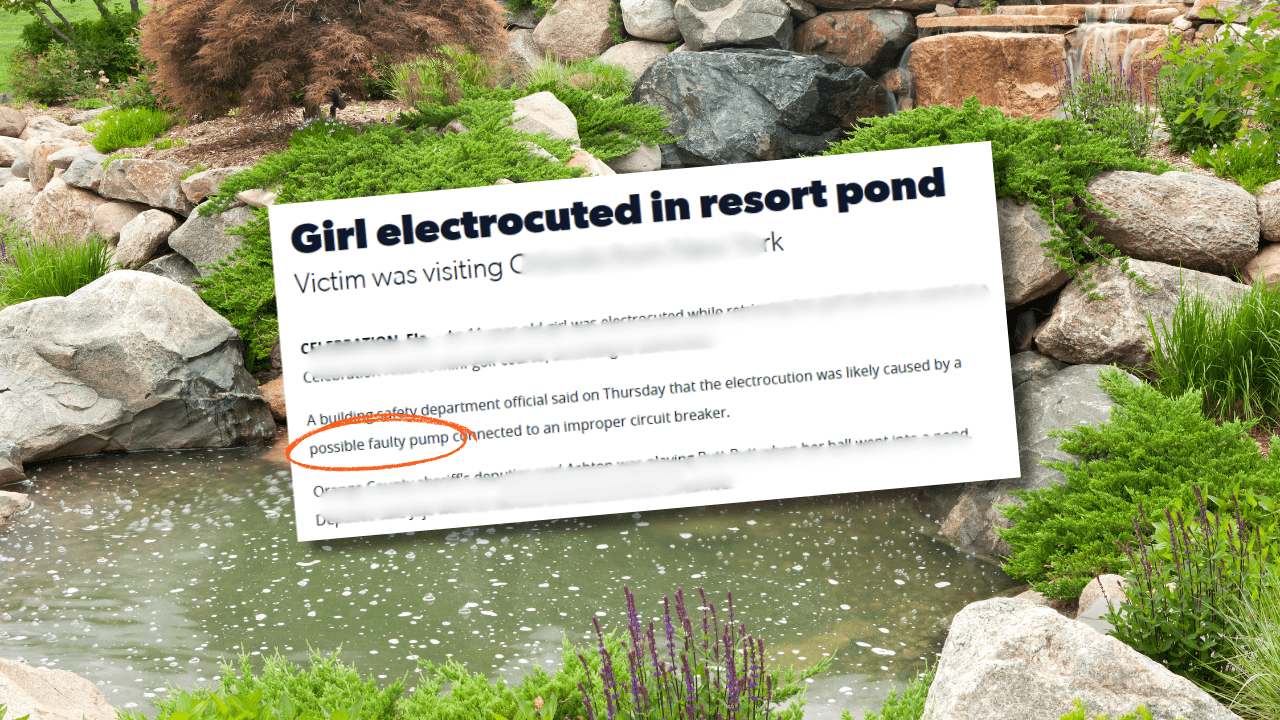Are Submersible Pond Pumps Safe? (Important Safety Tips)
Submersible pond pumps work quietly behind the scenes, keeping your water moving and your pond healthy. They usually do their job without a hitch. In over 20 years of working with these pumps, I’ve never personally had one go bad on me. But I have read news stories of people and pets losing their lives and I’ve talked to people who lost all their fish because of a short or seal failure.
But, let me be clear. Pond pump manufacturers do design their pumps to be safe. However, their strict safety measures do not remove all risks.
If you use a submersible pump, it pays to know what can go wrong and how to stay ahead of it.
What Can Go Wrong with a Submersible Pump?

The Seals
The engine of a submersible pump is inside a cast-iron casing with many internal safeguards to prevent water from touching its electrical components and moving parts.
But, like anything in life, these seals can degrade over time or fail. The result is water can come into contact with the electrical components creating the worst-case scenario, electrified pond water.
The Wires
Just as they do with the casing of the unit, manufacturers put a lot of care into properly protecting any wires or cables that may come into contact with pond water.
Pond pump manufacturers typically encase any electrical wires in a neoprene (a synthetic rubber) coating. And any gaps on the unit are often filled with an epoxy, which helps ensure no water can enter.
But, again, through age, impact, mishandling, the neoprene coating, and epoxy can crack, allowing water to contact the electrical components.
Freezing Temperatures
If your pond doesn’t completely freeze over in winter, it’s typically fine to leave your pump in the water. However, if there is any chance that the water could freeze, it's best to remove your pump.
Any water in your pump that freezes will expand, potentially causing the casing or any seals to crack. And when Spring rolls around and you turn your pump back on, you could be in for a shocking surprise (pun intended).
![]() Tip
Tip
When storing your submersible pond pump for the winter, be sure to store it in a bucket of water in your house to prevent the seals from drying out.
Wrong outlet Type
In the good ol’ US of A, the Occupational Safety and Health Administration (OSHA) and the National Electric Code (NEC) require that all homeowners have a ground-fault circuit interrupter (GFCI) outlets where there is water present.
A GFCI intelligently detects power surges or leakages and automatically cuts off the power if it senses anomalies.
Most new homes have GFCI receptacles. However, many older homes don’t. If you plug in a submersible pump to a regular outlet, it could experience a power surge and increase the risk of electric shock.
Just to reiterate, always plug your submersible pond pump into a GFCI outlet. If you only have a regular outlet available, replace it with a GFCI outlet before plugging in your pond pump.
Get Our Best Pond Tips Sent to Your Inbox for Free!
Join thousands of others and learn from our decades of pond building and maintenance experience! Your pond will thank you!
By subscribing you agree to receive emails from PondAcademy.com. We will always respect your privacy and you can unsubscribe at any time.
How To Improve Safety When Using A Submersible Pond Pump
- Before installing the pump, check it for any damage, cracks, bad seals, etc. Contact the manufacturer immediately if you find any of the aforementioned.
- Any wiring should be performed by a qualified electrician.
- Only connect the pump to a GFCI outlet.
- Do not allow people or pets to swim or immerse themselves in a pond with a submersible pond pump. If you must enter the pond, be sure to turn the power off to the pump.
- Be sure to disconnect the pump from its power source before handling it.
- Do not use the power cord to lift the pump out of the water.
- If you remove the pump from your pond for an extended period of time (during winter, for example) be sure to store it in a bucket of water in your house to prevent the seals from drying out.
- If it fits your pump needs, opt for a low-wattage solar-powered pond pump.
- Finally, ask yourself, do I really need a pond pump? If you don’t have any water features in your pond and it's full of oxygenating pond plants, you might not even need one. Many fish, like goldfish, will survive in a pond without a pump.
The takeaway here? We don’t want to discourage you from using a submersible pond pump. In fact, I recommend them here on this site. But, whenever you deal with electricity and water, you need to use extreme caution. So, feel free to responsibly and safely use a submersible pond pump to power your pond components.




